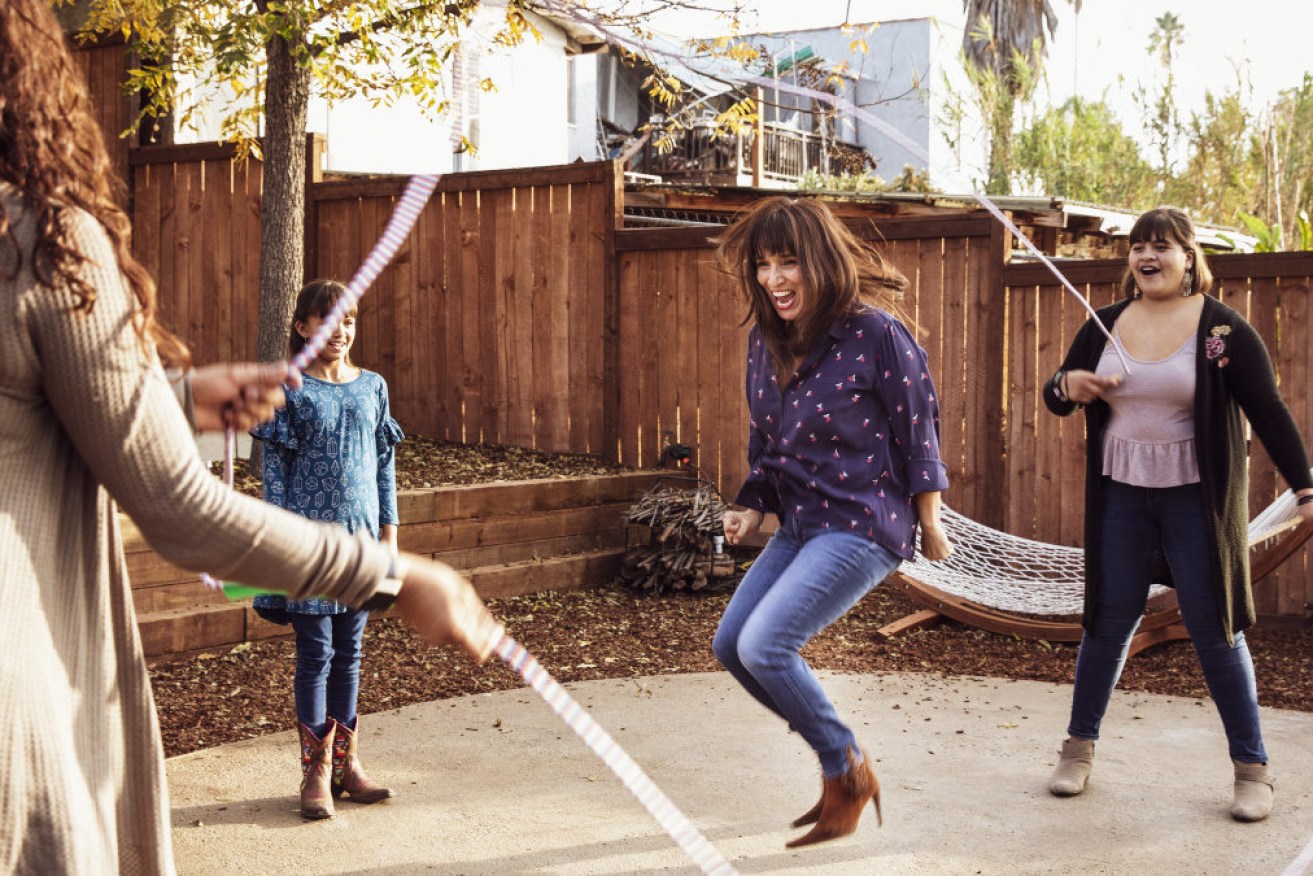Just one in six Australian kids is meeting exercise guidelines. Can influencers help?


Primary school games such as skipping rope aren't so "cool" among high-schoolers. Photo: Getty
What will it take to get our young people moving and save themselves from the national curse of obesity, diabetes and associated cancers?
The latest Cancer Council National Secondary Students Diet and Activity study found that only one in six Australian children aged 12 to 17 is getting the recommended amount of huff-and-puff physical exercise.
That’s 16 percent of these kids playing sport or running or otherwise getting their heart rates up.
They’re meant to get an hour of moderate to vigorous exercise a day – advice that applies to children aged between five and 18.
Some good news, and insights
Clare Hughes, chair of the Cancer Council’s Nutrition and Physical Activity Committee, said there was some good news: the survey reported six in 10 teens (61 per cent) were getting the recommended 60 minutes of physical activity at least four days a week.
This was an increase from five in 10 (52 per cent) reported in the 2009-10 study.
“So more of them are doing more exercise,” she said. “They’re getting closer to meeting the guidelines.”
Ms Hughes said the main barriers to getting more exercise – according to the teens surveyed – was “not having enough options in physical activity classes”, and living too far from school to walk or ride there”.
Other insights:
- Boys were more than twice as likely to meet the physical activity recommendations than girls (21 per cent compared to 9 per cent), with girls citing a number of personal barriers to participating in physical activity, the most common being feeling self-conscious when undertaking physical activity.
- Girls were around twice as likely to note feeling self-conscious, with 30 per cent of girls reporting this, compared to only 16 per cent of males feeling this way.
- Girls were more likely than boys to report weight management as a reason to be physically active, but not by much: 77 per cent of girls reported this compared to 73 per cent of boys.
- Three in four students agreed that both their school and their parents encourage them to undertake sports and physical activities.
The Cancer Council said the lack of physical activity in teenagers was “concerning” because the habits adopted during school years tend to be played out in adulthood – and being physically active “reduces the risk of unhealthy weight gain and the risk of developing 13 different cancers later in life, including endometrial, breast and bowel cancer.”
An hour a day of exercise isn’t the whole story
The guidelines from the federal Department of Health also recommend that children get several hours of light physical activity each day. This is essentially just moving around and breaking up sitting time.
Dr Kate Parker, a research fellow with the Institute for Physical Activity and Nutrition (IPAN) at Deakin University, told The New Daily:
“We know that extended sedentary behaviour is bad for us. So just getting up and moving about, slow walking, breaking up the sitting time in classrooms is important.”
Dr Parker said there wasn’t an understanding of exactly how much of this moving-around activity is optimal – and it wasn’t widely discussed or researched. In other words, it more or less goes through to the keeper.
“It’s difficult to measure what is basically in-between time, unless we put monitors on students,” she said.
She also pointed that the guidelines, in their entirety, include activities at least three times a week that strengthen muscles and bones.
Dr Parker said about 16 per cent of teenagers are meeting this requirement.
She said that while schools are keen for students to exercise more, school children are only required to do 100 minutes of exercise a week – and that’s only up to Year 10.
Students in years 11 and 12 weren’t required to do any exercise at all – despite the fact that these were particularly stressful years.
Dr Parker also made the interesting point that primary schools are physically structured for chasing games and other activities. When kids go to high school, they might continue to play some of those games for a short while, “before realising it’s not cool”.
What might motivate teens to get more active?
Dr Parker and other IPAN researchers are now working with secondary schools to see how physical activity could be incorporated in the daily rhythm of school life – based on previous work they’ve done in primary schools.
She said the challengers are that teenagers are a particularly hard group “to reach”, and that the school’s academic curriculum is so busy and demanding.
Last year, Dr Parker ran a study that investigated the impacts of COVID-19 on physical activity levels.
She found that students who engaged with social media accounts that promoted health and exercise were four times more likely to meet government guidelines. These accounts were largely the province of lifestyle influencers trading on a fitness and wellness theme, as many of them do.
“Which is really promising,” she said. “But we need to be careful with that.”
Why? Because influencers tend to promote “a certain body image and a certain look” – which in turn can prove to be unhealthy.
So it’s tricky.
For information about how to get kids involved in exercise, see here.








